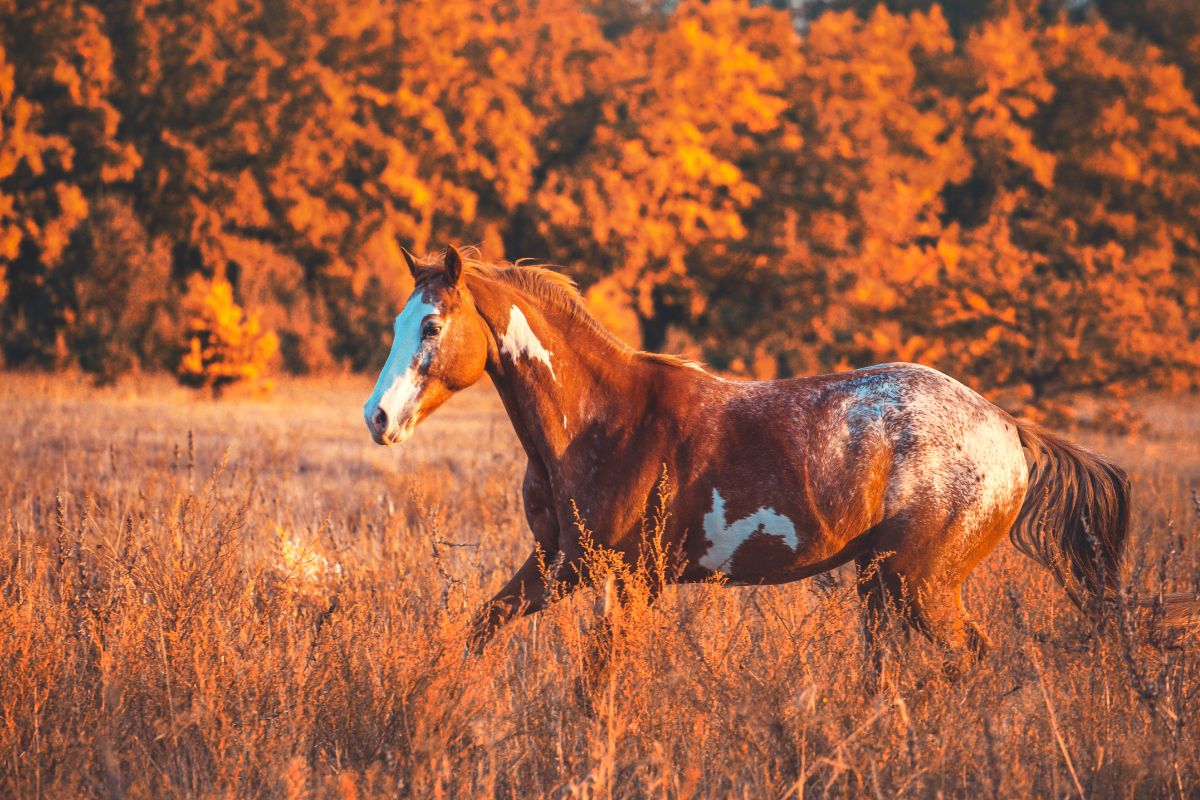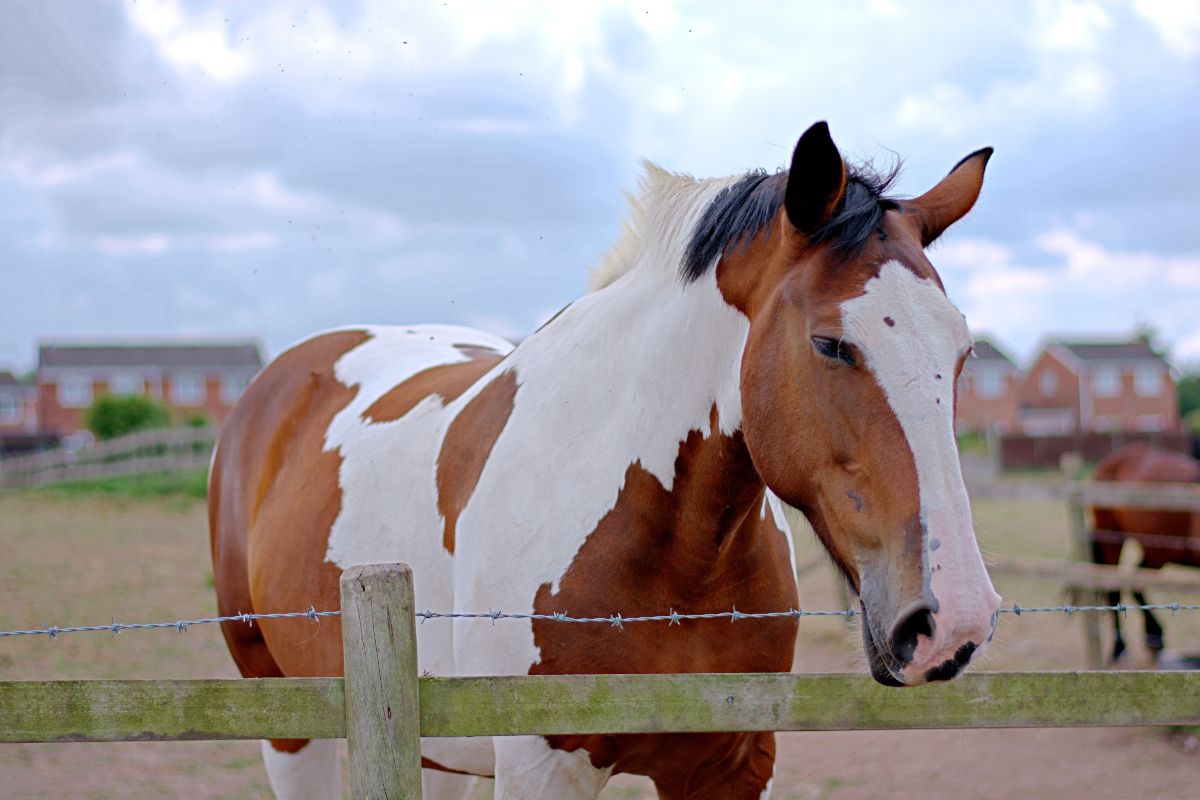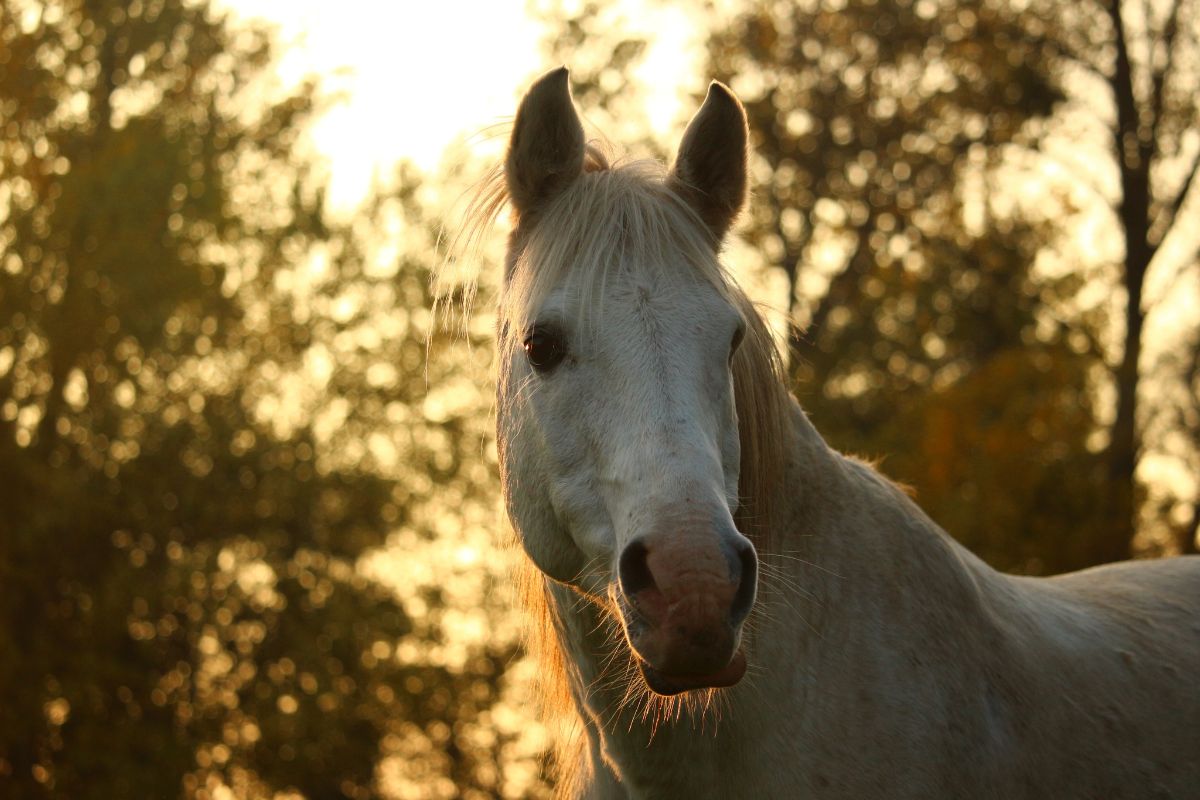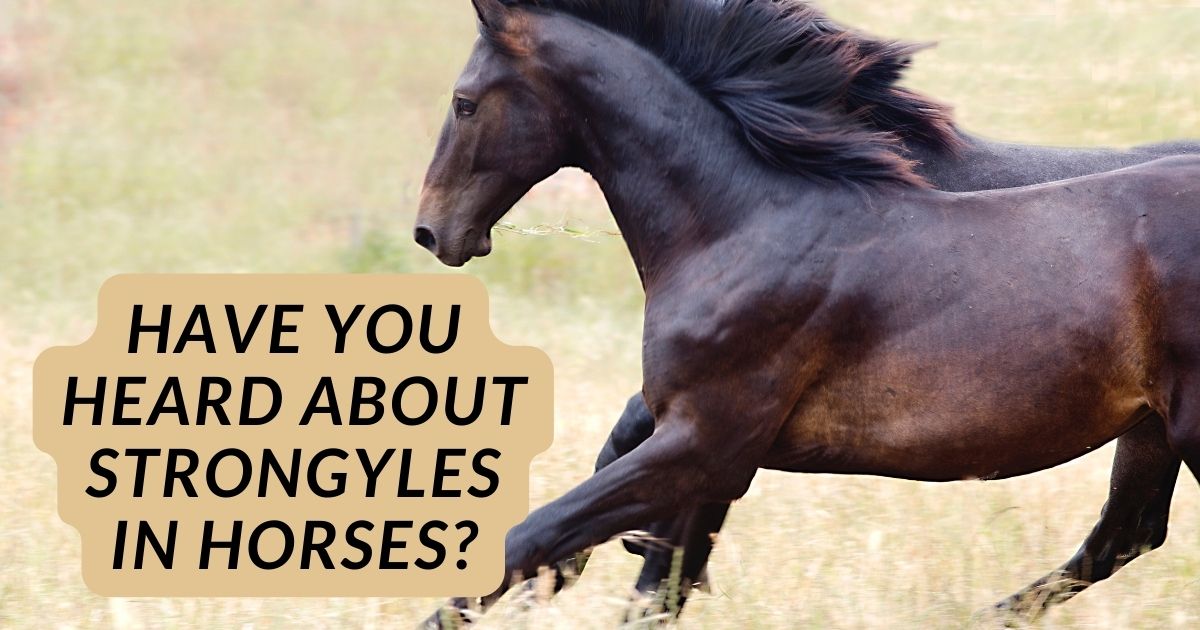What are Strongyles in Horses?
Strongyles in horses are nematode worms that feed off of their host’s blood. If horses in a stable yard show nonspecific symptoms of weight loss, poor performance, and a dull coat, owners may need to consider looking for strongyle worms.
Strongyles commonly occur in grazing animals. Pastures become contaminated with feces containing strongyle eggs, and when the larvae hatch, the horses ingest them while grazing.
Strongylosis is also known as bloodworm in horses.

What Does a Strongylus Vulgaris Egg Look Like?
A strongyle egg is oval with a thin shell containing a morula of 8-6 cells. Microscopically differentiating the eggs of cyathostomins and large strongyles is very difficult, hence why most fecal floats report strongyle-type eggs without a specific species. Fecal flotations limitations in egg identification do not offer an accurate strongylosis diagnosis.
Small Strongyles vs. Large Strongyles
Strongyles fall into two groups, either large or small. The three primary species of large strongyles that infect horses are Strongylus vulgaris, Strongylus endentatus, and Strongylus equinus.
The four main small strongyles in horses include Cyathostomum, Cylicocyclus, Cylicodontophorus, and Cylicostephanus. The World Association for the Advancement of Veterinary Parasitology suggests referring to small strongyles as cyathostomins and that vets use the term cyathostominosis instead of strongylosis.
The extent of the disease process damage depends on the type of parasite involved.
The Strongyles Life Cycle Explained
Strongyles are hardy helminths which means they survive harsh climatic conditions due to a protective sheath. The larvae of strongyles develop from eggs that pass into the environment from the feces of infected horses. The infective larvae survive thirty-one weeks in winter and around seven weeks in summer.
Horses become infected with larvae when they consume contaminated feed, pasture grass, or water. The lifecycles of large strongyles and cyathostomins are similar, but the development of larvae differs, which directly impacts the clinical symptoms manifested in the host.
The transmission pathways, encystation process, and migration patterns of cyathostomin larvae and the larvae of S. vulgaris, S. endentatus, and S. equinus are each unique.
Both large and small strongyles do not require an intermediate host to develop, as they have direct life cycles.
The life cycle of large strongyles includes the following stages:
- Horses ingest infective larvae, which enter the digestive tract and proceed to migrate through various parts of the body.
- Strongylus vulgaris larvae burrow into the walls of primary small and large intestine arteries. This migration leads to potential vascular disruption, blood clots, or scarring of the blood vessels.
- Strongylus endentatus and Strongylus equinus larval migration differ from S. vulgaris as they travel primarily through the liver, pancreas, and perirenal tissues, which damage the tissues but not as severely as the intestinal vascular damage.
- After three months, the larvae move into the lumen of the large intestine and complete the maturation process.
- The adults produce thousands of eggs that pass into the feces that then hatch into L1-stage larvae. The L1-stage larvae molt into the L2 and L3-stage, which is the infective stage.
- The prepatent period ranges between six to twelve months. This rate varies depending on the climate.
- The lifecycle of S. vulgaris ranges between six to seven months, and the other two large strongyles range between eight to eleven months.
The small strongyle (cyathostomes) life cycle is similar to the large strongyle life cycle, except for one significant difference – the larvae burrow into the intestinal lumen and encyst within a fibrous capsule in the large colon.
- After ingesting early L3-stage larvae, the small strongyles enter the large intestine, or cecum, and encyst within the mucosal walls. The larvae then go through four stages and develop into the late L3 stage, which molts into an early L4- stage larva.
- The L3-stage larvae suspend development in winter months and emerge in large quantities in summer, often developing clinical symptoms.

The Pathogenesis
The strongyle pathogenesis lies within the migration of the parasites. Heavy parasite burdens lead to a negative energy balance as the worms deplete the horse’s nutrients and blood. The nutritional imbalance can lead to developmental delays, depressed growth, poor reproductive health, and reduced athletic performance.
Large strongyles larvae migrate to the cranial mesenteric artery, damaging the artery and its branches, thereby compromising blood flow to the intestines. Complications such as colic, gut stasis, torsions, intussusceptions, and possible rupture are risk factors associated with significant strongyle infections.
Adult large strongyles feed on the blood and cause anemia and poor coat conditions. Their large mouths allow them to grasp onto the large intestine and cecal mucosal lining, which damages the lining and causes moderate intestinal bleeding.
Adult cyathostomins have small mouths that do not attach easily to the mucosal lining of the large intestine. The encysted larvae avoid the immune system and inflammation. The larvae cause the most damage when they rupture and individually emerge into the gut lumen.
What are the Clinical Signs?
Strongylosis infection often presents with non-specific symptoms. The clinical signs depend on the severity of the helminth burden as well as the age of the horse.
With small strongyles, horses present with nutritional deficiency symptoms such as stunted weight gain, decreased feed conversion ratios and poor performance. Severe infections result in acute colic or diarrhea. Most clinical signs present when the small strongyles emerge from their encysted cyathostomes in the gut wall, which causes significant inflammation.
Clinical signs of large strongyles infection include chronic weight loss, compromised athletic performance, and a dull coat.
The S. vulgaris migrating larvae have discrete clinical signs, but reports of colic cases occur and can result in severely complicated colic sequelae if left undiagnosed.
Diagnosing Strongyles in Horses
The key to diagnosing strongylosis is a thorough clinical history and close monitoring of any horses who appear to have dull coats, chronic weight loss, and poor performance. Owners should discuss pasture management practices and deworming schedules with the attending vet.
During routine fecal flotations, mixed infections of strongyle eggs reveal mostly the eggs of small strongyles. It is challenging to differentiate microscopically between the eggs of small and large strongyles.
There is little value in fecal egg counts to quantify strongylid infections causing clinical disease because the test does not show which larval stage or how many parasites may be causing the symptoms. Egg counts do not accurately reflect the severity of the parasite burden. Fecal culture is a more accurate diagnostic test.
Vets may also diagnose severe cases of strongylosis if blood tests indicate mild anemia, neutrophilia, low albumin, and high gamma globulins due to the associated inflammatory process of the disease.
Strongyles in Horses – The Best Treatment Options
Strongyles in horses treatment options include dosing horses regularly with anthelmintic drugs. The drug groups that are effective against adult strongyles include:
- Macrocyclic lactones.
- Benzimidazoles.
- Tetrahydropyrimidines (Pyrantel salts).
Very few drugs effectively kill the larval stages of both small and large strongyles.
Research shows that fenbendazole and moxidectin (a macrocyclic lactone) effectively kill encysted cyathostomin larvae and the migrating larvae of large strongyles. Resistance to deworming medications is rising, and benzimidazole resistance reports are increasing.
Resistance to tetrahydropyrimidines is increasing, but macrocyclic lactone resistance has not yet occurred.
Vets recommend strategic deworming schedules for horses older than two months of age.
How to Control and Prevent it
Controlling and preventing large strongyles and cyathostomins lies within strategic deworming schedules, pasture management, and excellent stable hygiene practice because this minimizes the number of eggs that contaminate feed, pastures, or water sources.
Routine deworming may lead to increased drug resistance, so vets recommend only deworming during times of the year when egg burdens are at their highest in spring and fall. Managers must focus on animals at increased risk for developing clinical signs.
A controlled deworming program is risk-based. According to fecal egg count testing, vets classify horses as low, moderate, or high contaminators. Only moderate and high contaminators need deworming to decrease pasture contamination.
Pasture rotation and rest periods ensure infective larvae starve without a host for at least six months. The rest period decreases the pasture egg burden and reduces the number of ingested eggs in the following grazing season.
Maintaining stable hygiene standards and rotating pastures are vital to decreasing egg exposure. Do not overstock paddocks and reserve pastures with the most negligible contamination for nursing mares and foals. Always deworm new additions to any stable or herd and isolate them for at least 72 hours after treatment in a hospital paddock.

Final Verdict
It is impractical and impossible to rid horses of all strongyle worms. Some well-managed farms and stable yards achieve the eradication of most large strongyles, but small strongyles in horses remain a problem.
The moderate pathogenicity of small strongyles continues to burden horses and results in non-specific symptoms that can escalate into more severe symptoms if not closely monitored. Owner and stable managers should pay attention to horses showing signs of chronic weight loss, poor coat quality, or compromised performance.
The key to keeping horses healthy and stable or pasture parasite burdens low is closely monitoring horses for symptoms and keeping up with good husbandry practices.
